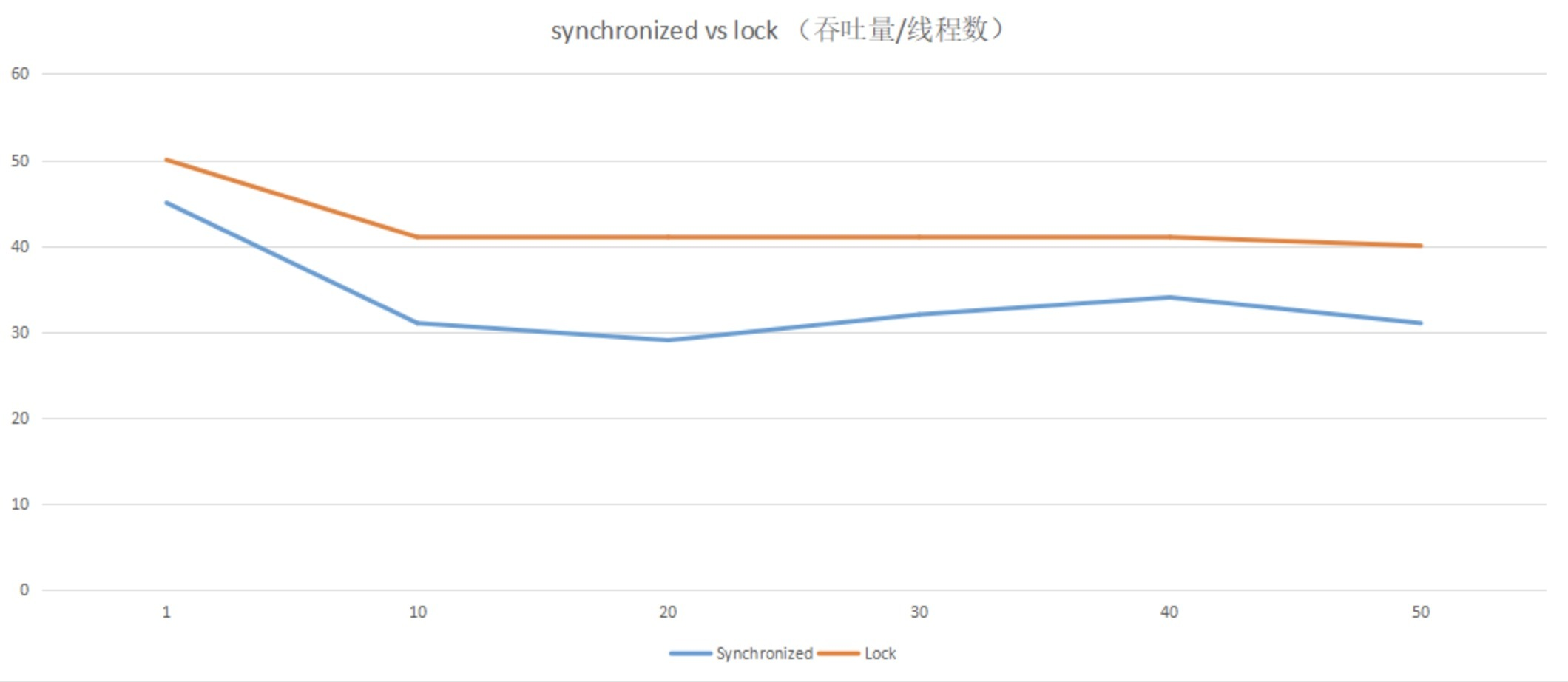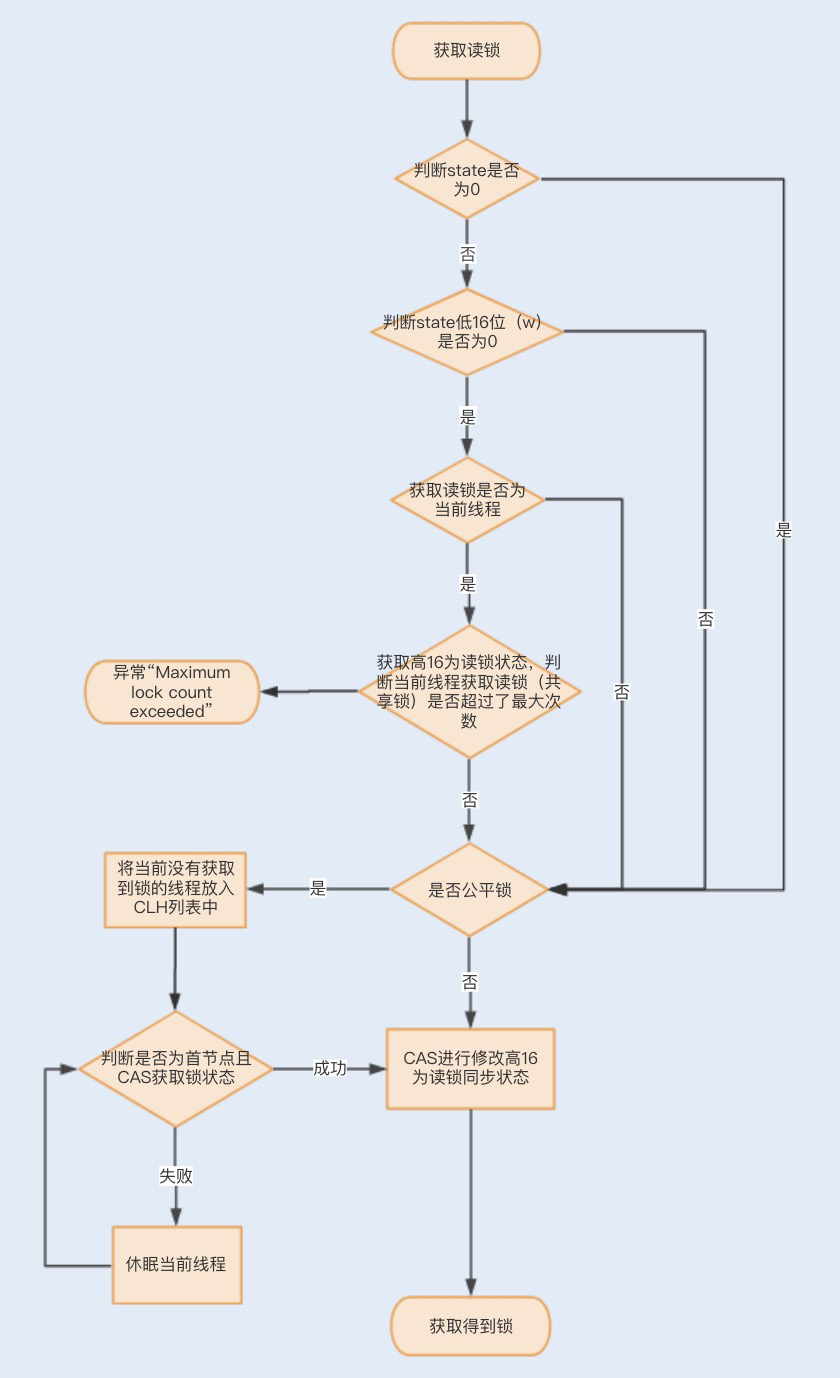Hello everyone, I am Yi An.
Today we will briefly talk about the Lock synchronization lock provided by Java after JDK1.5.
Compared with the Synchronized synchronization lock that requires the JVM to acquire and release the lock implicitly, the Lock synchronization lock (hereinafter referred to as the Lock lock) needs to acquire and release the lock explicitly, which provides more flexibility for acquiring and releasing the lock. The basic operation of the Lock lock is implemented through optimistic locking, but since the Lock lock is also suspended when blocking, it is still a pessimistic lock. We can simply compare the next two synchronization locks through a picture to understand their respective characteristics:

In terms of performance, when the amount of concurrency is not high and the competition is not fierce, Synchronized synchronization locks have the advantages of hierarchical locks, and their performance is similar to that of Lock locks; but in the case of high load and high concurrency, Synchronized synchronization locks Due to fierce competition, it will be upgraded to a heavyweight lock, and its performance is not as stable as that of a Lock lock.
We can visually compare the performance of the two locks through a set of simple performance tests. The results are shown below, and the code can be downloaded and viewed on Github .

Through the above data, we can find that the performance of Lock lock is relatively more stable.
The realization principle of Lock lock
Lock is a lock implemented based on Java. Lock is an interface class. The commonly used implementation classes are ReentrantLock and ReentrantReadWriteLock (RRW), which are all implemented by relying on the AbstractQueuedSynchronizer (AQS) class.
The AQS class structure contains a waiting queue (CLH queue) based on a linked list, which is used to store all blocked threads. There is also a state variable in AQS, which represents the locking state for ReentrantLock.
The operations of this queue are all implemented through CAS operations. We can see the entire process of acquiring locks through a picture.

Lock Separation Optimization Lock Synchronization Lock
Although the performance of the Lock lock is stable, not all scenarios use the ReentrantLock exclusive lock by default to achieve thread synchronization.
我们知道,对于同一份数据进行读写,如果一个线程在读数据,而另一个线程在写数据,那么读到的数据和最终的数据就会不一致;如果一个线程在写数据,而另一个线程也在写数据,那么线程前后看到的数据也会不一致。这个时候我们可以在读写方法中加入互斥锁,来保证任何时候只能有一个线程进行读或写操作。
在大部分业务场景中,读业务操作要远远大于写业务操作。而在多线程编程中,读操作并不会修改共享资源的数据,如果多个线程仅仅是读取共享资源,那么这种情况下其实没有必要对资源进行加锁。如果使用互斥锁,反倒会影响业务的并发性能,那么在这种场景下,有没有什么办法可以优化下锁的实现方式呢?
1.读写锁ReentrantReadWriteLock
针对这种读多写少的场景,Java提供了另外一个实现Lock接口的读写锁RRW。我们已知ReentrantLock是一个独占锁,同一时间只允许一个线程访问,而RRW允许多个读线程同时访问,但不允许写线程和读线程、写线程和写线程同时访问。读写锁内部维护了两个锁,一个是用于读操作的ReadLock,一个是用于写操作的WriteLock。
那读写锁又是如何实现锁分离来保证共享资源的原子性呢?
RRW也是基于AQS实现的,它的自定义同步器(继承AQS)需要在同步状态state上维护多个读线程和一个写线程的状态,该状态的设计成为实现读写锁的关键。RRW很好地使用了高低位,来实现一个整型控制两种状态的功能,读写锁将变量切分成了两个部分,高16位表示读,低16位表示写。
一个线程尝试获取写锁时, 会先判断同步状态state是否为0。如果state等于0,说明暂时没有其它线程获取锁;如果state不等于0,则说明有其它线程获取了锁。
此时再判断同步状态state的低16位(w)是否为0,如果w为0,则说明其它线程获取了读锁,此时进入CLH队列进行阻塞等待;如果w不为0,则说明其它线程获取了写锁,此时要判断获取了写锁的是不是当前线程,若不是就进入CLH队列进行阻塞等待;若是,就应该判断当前线程获取写锁是否超过了最大次数,若超过,抛异常,反之更新同步状态。

一个线程尝试获取读锁时, 同样会先判断同步状态state是否为0。如果state等于0,说明暂时没有其它线程获取锁,此时判断是否需要阻塞,如果需要阻塞,则进入CLH队列进行阻塞等待;如果不需要阻塞,则CAS更新同步状态为读状态。
如果state不等于0,会判断同步状态低16位,如果存在写锁,则获取读锁失败,进入CLH阻塞队列;反之,判断当前线程是否应该被阻塞,如果不应该阻塞则尝试CAS同步状态,获取成功更新同步锁为读状态。

下面我们通过一个求平方的例子,来感受下RRW的实现,代码如下:
public class TestRTTLock {
private double x, y;
private ReentrantReadWriteLock lock = new ReentrantReadWriteLock();
// 读锁
private Lock readLock = lock.readLock();
// 写锁
private Lock writeLock = lock.writeLock();
public double read() {
//获取读锁
readLock.lock();
try {
return Math.sqrt(x * x + y * y);
} finally {
//释放读锁
readLock.unlock();
}
}
public void move(double deltaX, double deltaY) {
//获取写锁
writeLock.lock();
try {
x += deltaX;
y += deltaY;
} finally {
//释放写锁
writeLock.unlock();
}
}
}
2.读写锁再优化之StampedLock
RRW被很好地应用在了读大于写的并发场景中,然而RRW在性能上还有可提升的空间。在读取很多、写入很少的情况下,RRW会使写入线程遭遇饥饿(Starvation)问题,也就是说写入线程会因迟迟无法竞争到锁而一直处于等待状态。
在JDK1.8中,Java提供了StampedLock类解决了这个问题。StampedLock不是基于AQS实现的,但实现的原理和AQS是一样的,都是基于队列和锁状态实现的。与RRW不一样的是,StampedLock控制锁有三种模式: 写、悲观读以及乐观读,并且StampedLock在获取锁时会返回一个票据stamp,获取的stamp除了在释放锁时需要校验,在乐观读模式下,stamp还会作为读取共享资源后的二次校验。
我们先通过一个官方的例子来了解下StampedLock是如何使用的,代码如下:
public class Point {
private double x, y;
private final StampedLock s1 = new StampedLock();
void move(double deltaX, double deltaY) {
//获取写锁
long stamp = s1.writeLock();
try {
x += deltaX;
y += deltaY;
} finally {
//释放写锁
s1.unlockWrite(stamp);
}
}
double distanceFormOrigin() {
//乐观读操作
long stamp = s1.tryOptimisticRead();
//拷贝变量
double currentX = x, currentY = y;
//判断读期间是否有写操作
if (!s1.validate(stamp)) {
//升级为悲观读
stamp = s1.readLock();
try {
currentX = x;
currentY = y;
} finally {
s1.unlockRead(stamp);
}
}
return Math.sqrt(currentX * currentX + currentY * currentY);
}
}
我们可以发现:一个写线程获取写锁的过程中,首先是通过WriteLock获取一个票据stamp,WriteLock是一个独占锁,同时只有一个线程可以获取该锁,当一个线程获取该锁后,其它请求的线程必须等待,当没有线程持有读锁或者写锁的时候才可以获取到该锁。请求该锁成功后会返回一个stamp票据变量,用来表示该锁的版本,当释放该锁的时候,需要unlockWrite并传递参数stamp。
接下来就是一个读线程获取锁的过程。首先线程会通过乐观锁tryOptimisticRead操作获取票据stamp ,如果当前没有线程持有写锁,则返回一个非0的stamp版本信息。线程获取该stamp后,将会拷贝一份共享资源到方法栈,在这之前具体的操作都是基于方法栈的拷贝数据。
之后方法还需要调用validate,验证之前调用tryOptimisticRead返回的stamp在当前是否有其它线程持有了写锁,如果是,那么validate会返回0,升级为悲观锁;否则就可以使用该stamp版本的锁对数据进行操作。
相比于RRW,StampedLock获取读锁只是使用与或操作进行检验,不涉及CAS操作,即使第一次乐观锁获取失败,也会马上升级至悲观锁,这样就可以避免一直进行CAS操作带来的CPU占用性能的问题,因此StampedLock的效率更高。
总结
不管使用Synchronized同步锁还是Lock同步锁,只要存在锁竞争就会产生线程阻塞,从而导致线程之间的频繁切换,最终增加性能消耗。因此,如何降低锁竞争,就成为了优化锁的关键。
在Synchronized同步锁中,我们了解了可以通过减小锁粒度、减少锁占用时间来降低锁的竞争。我们知道可以利用Lock锁的灵活性,通过锁分离的方式来降低锁竞争。
Lock锁实现了读写锁分离来优化读大于写的场景,从普通的RRW实现到读锁和写锁,到StampedLock实现了乐观读锁、悲观读锁和写锁,都是为了降低锁的竞争,促使系统的并发性能达到最佳。
If this article is helpful to you, please like and share, it is very important for me to continue to share & create high-quality articles. grateful!
This article is published by mdnice multi-platform